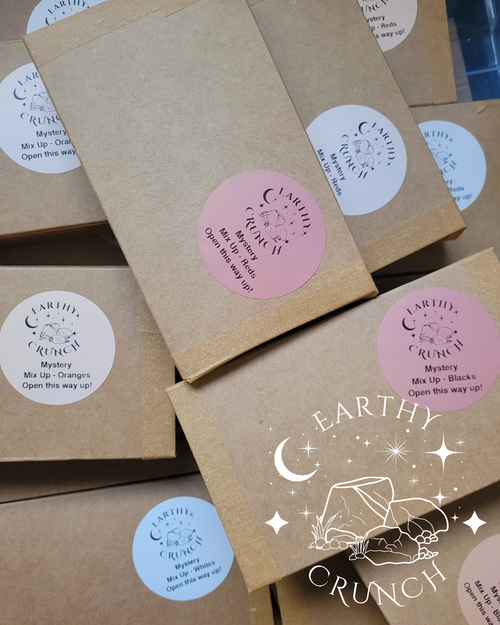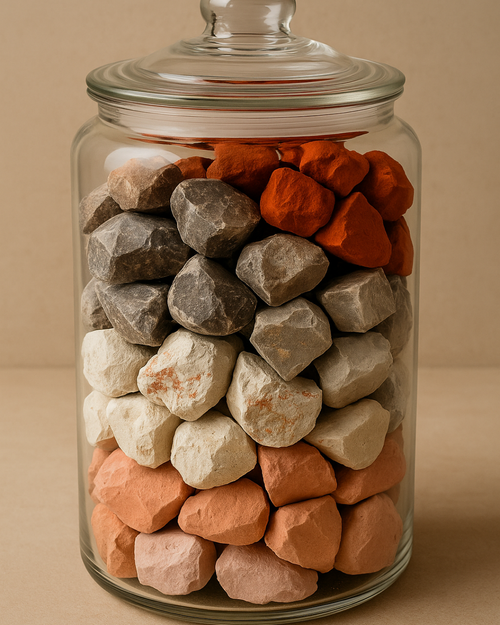When it comes to edible clays, chalks, and earthy treats, it’s not just the source that matters — it’s the way they’re prepared. Processing methods like roasting, leaving raw, or sun-drying can transform the same base clay into entirely different tasting experiences. Think of it like coffee beans: a light roast versus a dark roast can completely shift flavour, texture, and even how satisfying the crunch feels. Let’s dig into the earthy details.
Raw: Pure and Untamed
Raw clays are often the closest you’ll get to the earth in its natural state. Because they’re unprocessed (aside from basic cleaning and breaking into pieces), the flavours are strong and true to the soil.
-
Taste profile: Expect bold, mineral-heavy notes — often cement-like, sometimes metallic, with that unmistakable “basement” or “soil after rain” character.
-
Texture: Depending on the clay, raw pieces can be firm and dense, breaking with a satisfying snap or sometimes powdering in the mouth.
-
Why people love it: Purists often go for raw clays because they’re authentic, grounding, and as natural as it gets.
Roasted: Smoky and Intense
Roasting brings out an entirely new side of clay. Heat transforms both the texture and taste, creating the kind of crunch that’s almost addictive. In India, for example, black clays are traditionally roasted to develop that sharp, smoky kick.
-
Taste profile: Roasting deepens and intensifies flavours — smokey, charred, sometimes petrol-tinged, with crisp edges that linger on the tongue. Some even describe notes of charcoal or asphalt.
-
Texture: Roasted clays usually deliver a harder, sharper crunch. They don’t just break — they shatter.
-
Why people love it: If you crave strong, punchy flavours and a dramatic crunch factor, roasted clays are your best friend.
Sun-Dried: Gentle and Nuanced
Sun-drying is the middle ground — less aggressive than roasting, but still giving the clay a chance to firm up and develop subtle differences compared to raw. It’s also one of the oldest methods of preparation, relying solely on nature’s slow work.
-
Taste profile: Flavours tend to be milder and rounder — soft earthy notes, a touch of petrichor, sometimes with a dusty sweetness. You won’t find the smoky drama of roasting here, but you will get a softer, balanced earthiness.
-
Texture: Sun-dried clays are often lighter and slightly more brittle, snapping easily but with less resistance than raw or roasted.
-
Why people love it: Perfect for those who enjoy a more delicate crunch and gentler earthy flavours without overpowering sharpness.
Choosing Your Crunch
The preparation method makes all the difference. If raw clays are like eating fresh fruit off the tree, roasted clays are more like dark chocolate — bold, bitter, and intense. Sun-dried? Think somewhere in the middle, like a dried fig: natural but concentrated.
So next time you’re building your stash, ask yourself:
-
Do I want pure, unaltered earthiness? (Raw)
-
Am I craving bold, smoky drama? (Roasted)
-
Or do I fancy a balanced, lighter crunch? (Sun-dried)
Whichever you choose, you’re not just eating clay — you’re experiencing the artistry of preparation. And that’s what makes each bite unique.



0 comments